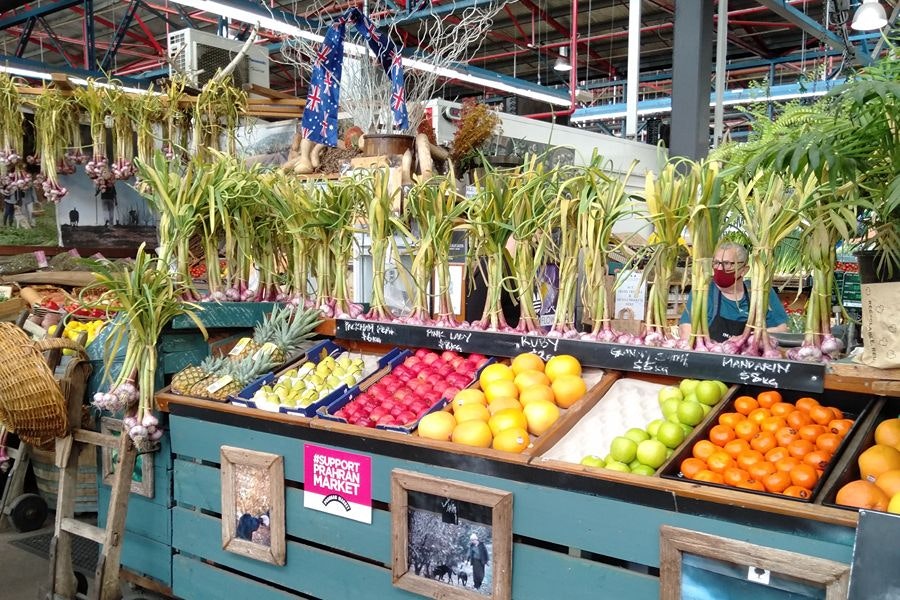Beginners guide to navigating the supermarket in Australia
All the information you'll need to feel at home shopping for groceries in Australia from the first day you arrive.
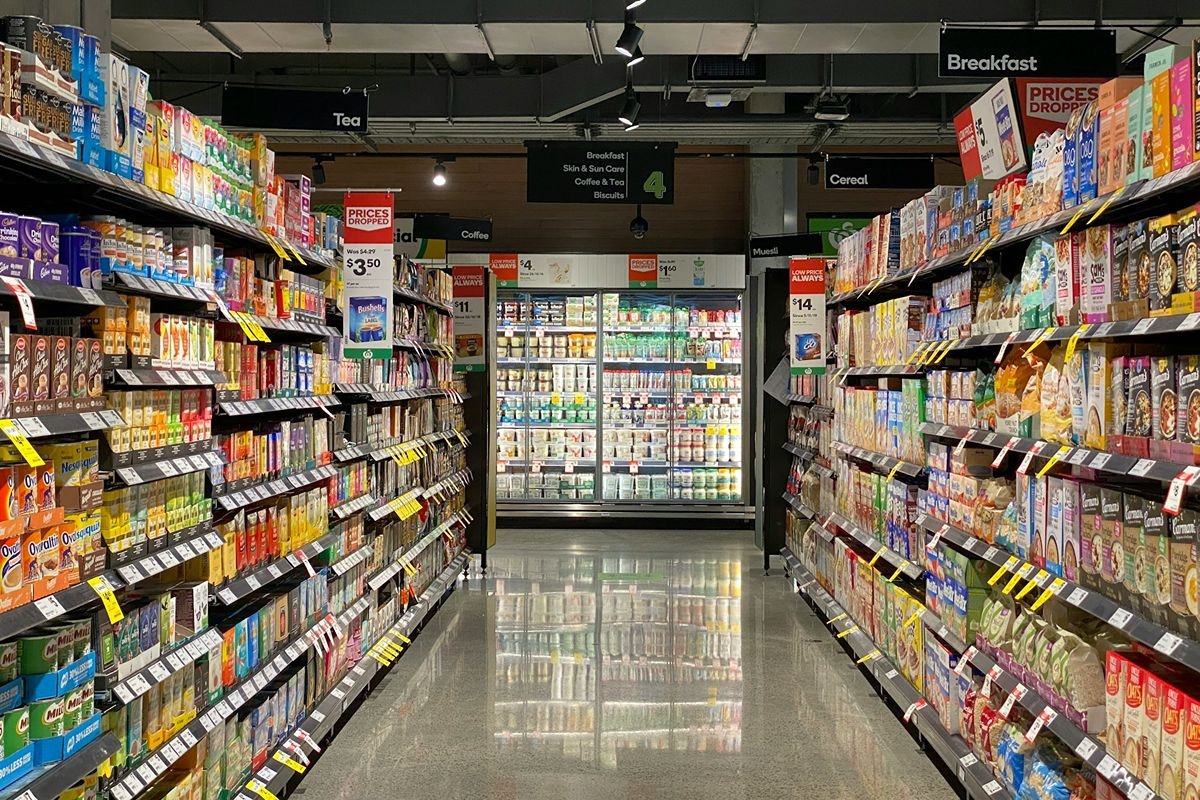
By:
LINA AVILA HENAO
Last Updated:
Jun 29, 2025
Tags:
#shopping #daily-life
Going to the supermarket is something you’ll frequently do in Australia! The good news is you’ll find large chain supermarkets offering a wide range of products, including both fresh and processed foods.
However, there are certain things you should know before going shopping to optimise your time and money.
By following this guide, you’ll walk through the supermarket like a pro, know what to expect on your first visit, and the best shopping options. We’ll share specific tips I wish I had known to save a bit of money initially.
Lets get started!
Supermarket chains in Australia
There are four major supermarket chains in Australia: ALDI, Coles, Woolworths, and IGA, located in every suburb and serving most residents.
Coles and Woolworths (also called ‘woolies’): These are the most popular. They stock all sorts of fresh, processed, and frozen products. Prices vary between them, but not by much. Inside, they have their own bakery and offer fresh bread daily; they also have a section called “Deli,” which I’ll explain in more detail later.
Aldi: Offers good prices, and the brands sold here are from local suppliers. The prices are very competitive compared to the other two chains. I recommend it for household cleaning products, nuts, sauces, canned goods, fruits, and vegetables. Truthfully, you’ll find a variety of products in this supermarket that you won’t find in the others.
IGA: Is an independent chain, generally smaller than the others I mentioned earlier. It’s more prevalent in regional areas and the products here are more specialised with different brands and, in my opinion, much pricier.
Sections in the supermarkets
Like in any supermarket, you’ll find a fruit and vegetable section, meat, bakery, and the Deli (explained in the next paragraph) at the front. Then there are the dairy, sauces and oils, grains, pasta, canned goods, cleaning products, and finally the frozen foods. Some supermarkets have an international food aisle where they bring in imported products mostly from India, England, Vietnam, and Mexico.
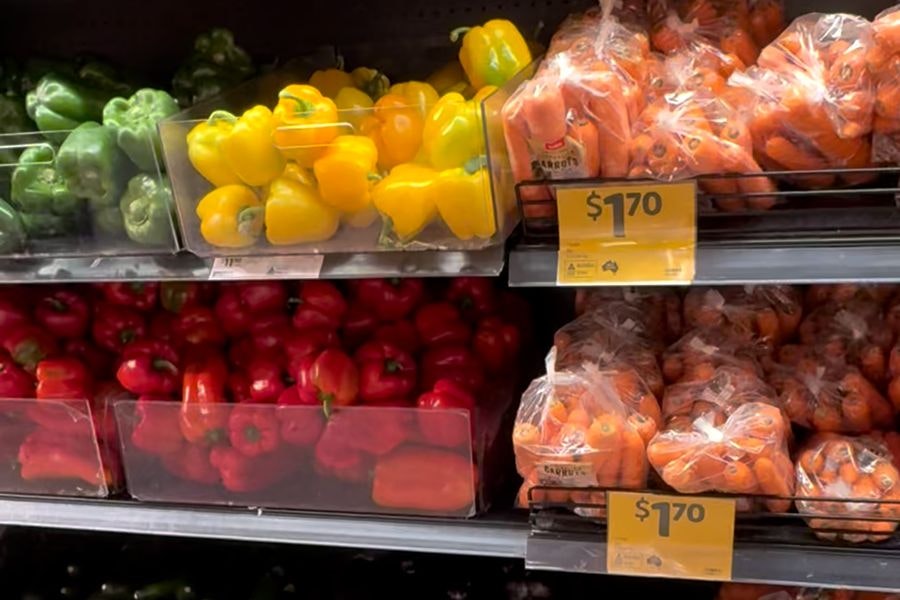
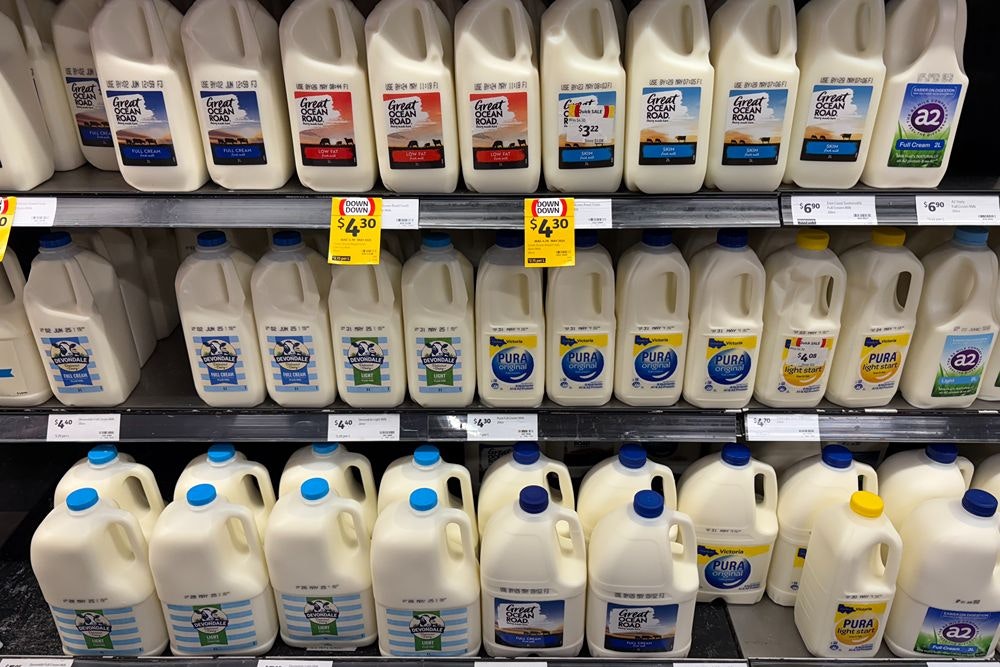
Deli or Delicatessen: Here you can find ready-to-eat food, cured meats, cheeses, fresh salads but also raw chicken, fish, and seafood for cooking. I’ve never seen meat at these counters. This is a great option for buying food by weight. You can buy anything from a slice of cheese or a few slices of ham to one or two chicken breasts (already without the bone) or a salmon fillet.
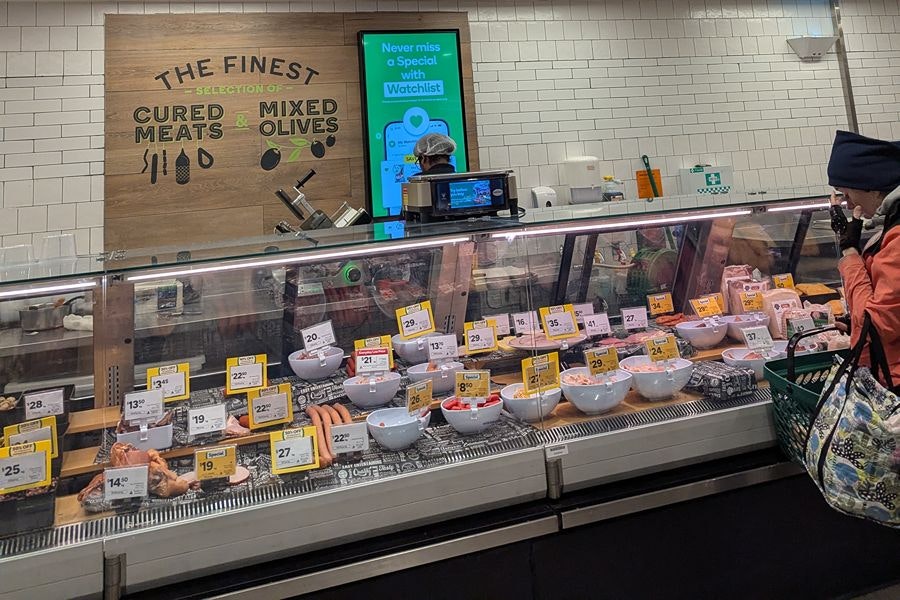
Lina's experience
You can order by grams or by the number of slices. Don’t be shy!!! I used to be a bit timid and was terrified the lady at the counter wouldn’t understand me. I assure you nothing bad will happen and you’ll quickly learn how to get by in this section.
The key here is knowing how to ask the person serving at the Deli counter.
To say approximately you can use the word “roughly” pronounced (rafly) or "about"
Can I please get roughly 50g of Ricotta cheese?
May I please have 5 slices of jam?
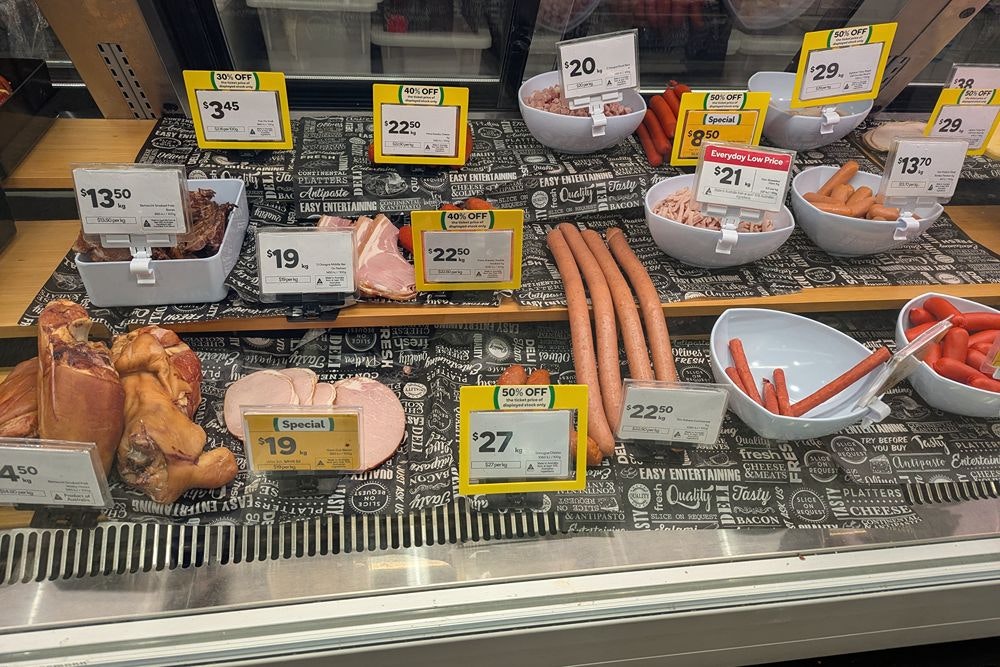
At the corners of each aisle, hanging from the first shelf, there’s a list or an index of items (products) with the aisle number where it’s located, to make finding things easier.
In Australia, alcoholic beverages are not sold in supermarkets. They are generally sold in shops sometimes adjacent to the supermarkets, equivalent to a liquor store. The bottles of beer and wine inside the supermarkets are 0% alcohol.
Products
There is a great variety of products in supermarkets in Australia, some are healthy others not so much, it depends on you and your preferences. However, there is a star rating (from 1 to 5) for processed products, usually found in the corners of the package.

The more stars, the healthier the product. This ranking is based on the amount of saturated fats, sugar, sodium, and protein per 100g or 100ml of the product. You might consider this or not, but it’s good to know.
Supermarkets have their own brand of products ‘home brand’ which is generally cheaper than other brands but not as good quality.
A recommendation is to look at the sodium content of the products! As you start trying new products to see which you like and which not, then keep an eye on this nutritional data.
Lina's experience
from personal experience, when I first arrived in Australia, I started consuming various types of cheese, deli meats, and soy sauces that were high in sodium. Over time, this led to some health issues. I recommend keeping this in mind from the beginning and not neglecting your diet.
The payment system
There are two options for paying at the supermarket.
Automatic, with automatic payment system machines.
How is it done? By scanning the barcode of the product and then passing it to the packing area. You must immediately put the product in the packing area or else you can’t process any other product.
If you have a fruit or a vegetable, you need to weigh it on the same machine so that it registers a price. To do this you must search for the product on the screen (if it’s a fruit or vegetable) they are in alphabetical order and then the machine weighs it. There’s always someone in the automatic payments area in case you have any problems, or the machine jams so relax.
The other option is with the cashier who registers your purchases and sometimes packs them or you can pack them in your bag yourself. Here you can also withdraw cash if you need to.
Discounts
The price of ready-to-eat food sold in the supermarket in Australia is reduced by half or less towards the end of the day around 6 pm. Examples of this are roast chicken, some salads, and bread.
How can you find out about discounts in supermarkets?
One way is by downloading the Coles and Woolworths App. You can also apply for a points accumulating card, called Woolworths rewards or Flybuys for Coles and then you can redeem the points and get discounts on future purchases when you’re paying for the groceries.
Another way to find out about discounts is through the printed catalogue, which is free and always available at the cashier area.
When you are inside the supermarket you can look for yellow labels placed on top of the products. For example, there are also products like meat or chicken that are sometimes reduced because the expiry date is near. If you buy them you should use them as soon as possible.
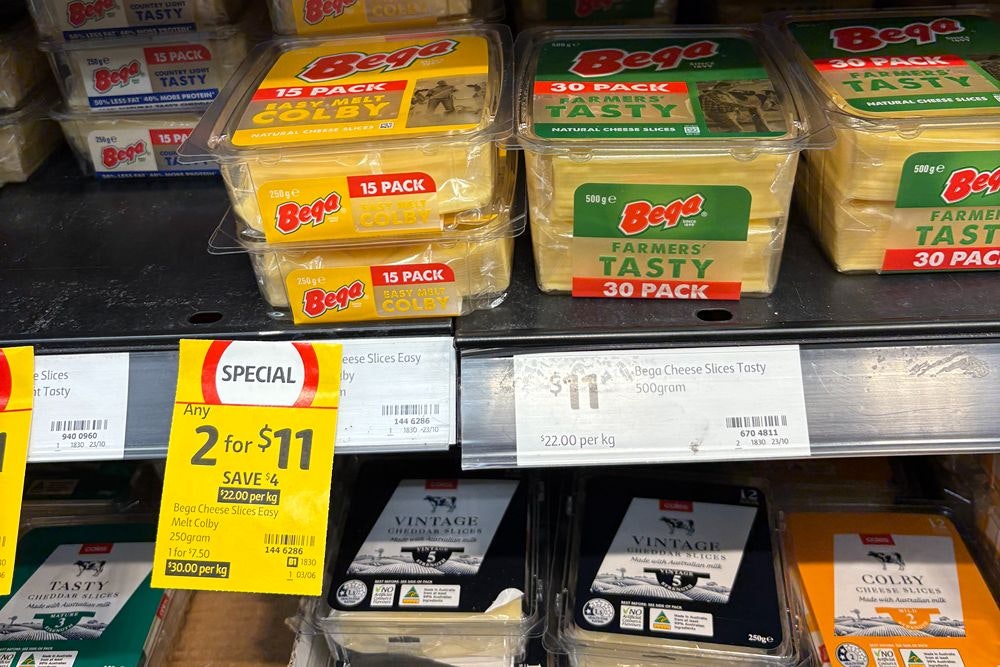
Lina's experience
Since I’ve been in Australia, I’ve noticed that many supermarkets offer discounts on Wednesdays, especially on fresh items like fruits, vegetables, and meat. However, this can vary depending on the store and the city, so it’s always a good idea to check online catalogues.
Differences with supermarkets in Colombia
Almost all products in Australia are sold in large packages - not in small or individual containers as in Colombia. The smallest amount of eggs you can buy are 6, there are no shampoo sachets or deodorant sachets. The cereal box is large and sweets are also usually in packets of many units. If you’re buying processed bread the slices are large and I’ve never seen them sell half a slice of bread.
Fruits and vegetables are seasonal in Australia. All those fruits that are not in season at that time vary in price and quality. They become more expensive and if you try them you’ll see that the flavour is not as good as if they were in season.
Alternatives to supermarkets
In some suburbs, there are mini Chinese or Indian supermarkets where you can find some vegetables, fruits and specialised products from those countries. They’re an alternative if you don’t want to go to the supermarket but watch out! Here you won’t find a variety of meats or fish. We cover a lot more of these little tips and tricks to maximise the value of your food shopping by shopping in other types of store in the linked article.
Tips based on my experience
Don’t expect to find all the same products as in Colombia. It’s a matter of trying and then deciding what you like. Perhaps something new you try you might like more. In my case at first, I missed Alpina products a lot for example the cheese, the yoghurt for drinking without a spoon (the majority of yoghurts in Australia are very thick), the milk, the healthy snacks from Taeq, the nuts but especially the flavour of the fruits. You’ll see that the fruits taste different in Australia, try it for yourself and see.
Make sure you check if the prices of vegetables and fruits are per unit or per kilo. Sometimes it can be confusing and make you think the price is per unit.
Bring your own bag. If not you must buy one and then you’ll accumulate many, plus you’ll be taking care of the planet.
If you’re buying several things you should bring your own trolley, try to get a two-wheeled trolley as soon as you can. Even though supermarkets are in all suburbs sometimes they’re not that close to houses.
Visiting the supermarket and cooking at home will allow you to eat healthier and be more sustainable with your budget.
Making a list of what you’re going to buy and making a menu plan will help you buy only what’s necessary and not waste food.
Don’t buy personal care products at the supermarket unless they’re on discount. The price varies a lot compared to Chemist Warehouse.
Buying fruits and vegetables in local markets or at Queen Victoria Market, the difference in prices and quality is noticeable. If you would like to now how much it cost to live in Australia visit our post.
To summarise
Supermarkets in Australia are not so difficult to understand and now that you know how they work you can do your shopping in a more efficient way.
There’s a great variety of food in supermarkets to suit all tastes and enough to keep you well equipped and prepare your own meals.
Remember, cooking at home allows you to save a bit more money and maintain a balanced diet. Eating out is also a great experience, but everything in moderation.

